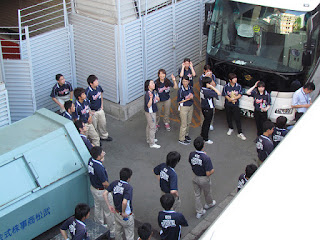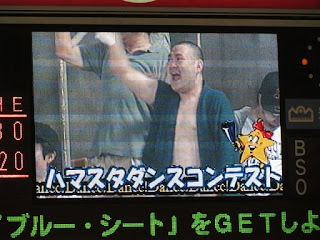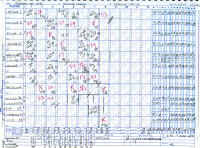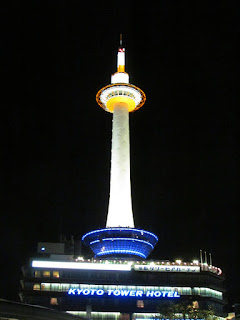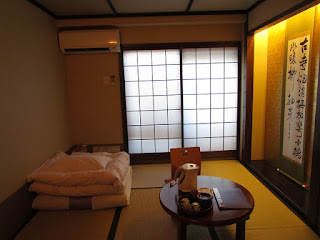On Why America Sucks at Everything, and Other Non-Baseball Topics
 |
| Domestic flying |
Sapporo, Japan
Outside of the Game:
This was when things got reals, yo, I had managed, more or less, a day a game of baseball in Japan, but now the teams at the ends of the Japanese earth were requiring me to up my game and include air travel as part of the equation. While reachable by train, Sapporo lacks a bullet train line (at the moment), and a regular train ride would take about as long as the plane ride over from America. It is, however, only an hour and a half plane ride from Tokyo. This choice seemed pretty obvious.
As with most things, the Japanese have an awesome travel deal for tourists with the JapanAir pass. It is slightly different than the JapanRail pass in that it cannot be used for unlimited air travel for a single fee, but it does offer extremely discounted airfares. It essentially makes any single-segment air trip in Japan (Tokyo to Sapporo, for example, is a single segment) about $120, roughly a third of the retail price. And that beats an eighteen hour train ride like a mule any day of the week.
It saddens me that there is nearly half the population alive in America today who has absolutely no knowledge of when air travel was awesome. Before the hijackings in the seventies, before the drug wars in the eighties, and definitely before “sexually aggressive pat-downs to children” period in our post-9/11 world, air travel was a glamorous and fun way of getting around. Even in the contemporary first-class cabin, any last semblance of air travel being fun and convenient has been wrung dry out of the process.
… In America.
Because I have had some culture shock moments traveling in Japan, but none comes even close to describing what I experienced my first time flying in Japan.
I was taking the 1 PM flight to Sapporo, so I decided to be on the conservative side and allow for Mr. Cock-Up by getting there at least 2 hours early. It was a short train ride to the Yokohama main station, where there was an express running to the airport. I managed to get there with over two hours to spare.
Upon arriving at the airport, it was a simple matter of finding the ANA counters, which, frankly, were hard to miss, being a bank of counters and kiosks about two city blocks long. I took out my reservation email for my Japan AirPass and waited in a curiously short line for ticketing and check in.
When my turn came, I was greeted by a cheery attendant who took my reservation, and started happily typing away on the computer. She then looked a little confused, and asked why I was here. Assuming standard security mumbo-jumbo, I told her I was on vacation, but she quickly apologized and asked why I was here so early. I innocently said to make sure I caught the plane.
Now she looked a little sad. She asked if I'd rather take the noon flight to Sapporo instead. I was already starting to lose my footing with the familiar here. I asked why, and she asked if it wouldn't be more convenient for me to leave earlier, or was I here to do some shopping? There was still some semblance of reality that I could grasp, but by this point it was sometime after 11:00. I asked if I had time to make that flight, and she told me sincerely there was plenty of time. Trust in Japan, I thought. Fine.
I asked how much it would cost to move to the earlier flight. Now I clearly had just hurt her feelings. No charge, she assured me, and the known world started quickly slipping away. I was probably just staring blankly for a while, waiting for someone to burst out of a back room screaming, “It's a cookbook!” But that didn't happen. It was just the smiling face placidly awaiting my next decision. I said yes to the earlier flight, and so she went back to happily typing away on the computer, and after the issue of isle or window was sorted out, she asked about my bags.
I gestured to my one carry-on, filled to breaking with a week's accumulated crap, and she came out from behind the counter, took me over to the bag measuring device, and told me I'd have to check the bag. It was nearly 11:30 at this point, and I once again asked her if I really had time to make the noon flight. “Hai,” she said smilingly in a way that made me feel awful for ever doubting her.
I went over to the next counter and another disturbingly short line to check my bag. The counter person asked a few questions, and then gave me a bar coded claim ticket and took my bag. It was after 11:30 at this point, and I hadn't even been through security yet for a noon flight.
I located the nearest security checkpoint, and found myself utterly baffled by the lack of any lines at all for security at the second-biggest airport in the capital. There were long tables jutting out of the security checkpoint, with signs explaining what you needed to take out of your bags and whatnot, and a big stack of trays into which to put the scanables. There was then a doorway that led to the scanning area. A-ha, I thought. That is where the line will be.
There was no line.
Once you walk through the doorway, you are at the security scanner. You scan your boarding pass at a machine that gives you a security receipt (which also notifies you of any gate changes), dump all your items on the conveyor, walk through a regular old metal detector and collect your stuff. Front to back, passing security took two minutes, if that.
 |
| Domestic terminal |
I was going to spend more time wondering what in the hell we as a country are doing wrong, but it was nearly 11:40, and I had a flight in twenty minutes. I jogged around until I found my gate, and realized that they hadn't even begun boarding yet. Perhaps the flight was delayed? Nope, they just hadn't boarded yet. I then saw a sign that warned everyone to please be at your gate no later than ten minutes before your flight for boarding. At this point, I just wanted to drop everything and scream, “WHAT?” at the top of my lungs, but promptly at 11:45, they began boarding.
Boarding was announced with a flip board that began with “Pre-Boarding,” for the elderly, pregnant, injured and the like. When those had boarded, they flipped to the sign reading “Priority Boarding,” for all the frequent fliers and big shots. When they had boarded, they flipped the sign to “General Boarding,” and everyone just went on the plane. No calls by isles, no back to front: just get on the damn plane.
You scan your boarding pass and get a final boarding receipt (which will tell you about delays, seat changes, and et cetera), and you walk onto the plane like a human being, go to your seat, and sit down. The entire process took about five minutes for the entire plane, and then waiting ten minutes for stragglers. And this was a full-sized plane, not some flying bus. I nearly cried at the beauty of it.
The stupid bureaucratic part of air travel in Japan took all of about ten minutes – if that – and was at no point unpleasant. Doing some back of the envelope calculations, that number is about an hour and a half in America, and soul-crushingly stupid for that duration. Japan: kicking Americas ass in everything since 1950.
Once on-board, you get the normal announcements and pre-flight security notices, but they do all of that while you are taxiing. The flight attendants make maybe two passes through the entire plane during this period, and after the safety video, you get to watch footage of a camera in the nose of the plane as you taxi around and take off.
After take-off, I promptly slept for most of the hour and a half flight, waking up long enough to finish off the scorecard from the previous night as we landed. Once we got to the gate, they opened the doors promptly, and everyone funneled out in about two minutes.
Okay, I bet they lost my bag or something, I thought.
Nope. The baggage claim was right outside of the gate, and bags started flowing from the machine in about five minutes. I got my bag, cursed everything about aviation in America, and went to find the train to Sapporo proper.
The express train in the city took about a half hour and dumped me at the station in the middle of Sapporo. A quick trip to the tourist office got me a map and the directions to my hotel, which was right down the street. After an extended settling in period at the hotel, I went out into the northerly world of Sapporo tom see what I could see. And northerly was key here, as Sapporo is generally much cooler than Tokyo, which can be brutal in the winter (they have special instructions in the tourist guides telling people how to properly dress in the winter so they don’t die), but a break in the temperature was particularly welcome after the triple-digit summer heat.
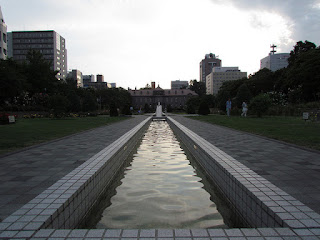 |
| Shiryokan |
A scheduled night without baseball is a rare thing on these trips, and I find myself a little lost as to what to do with myself during them. I started out by going to Odori Park, which was a block-wide park that runs nearly the entire length of downtown. Once I reached the other end, I kept walking in order to go to another park further on that apparently had a shrine of note. It took a little longer than expected, but I eventually found the nice-enough park and the shrine. And in the park maps, I discovered there was a zoo at the other end, so without anything better on the agenda, I took off in the general direction. Upon arriving, the zoo was closed, but there was a firemen training exercise going on that was worth watching a while, and another map let me know there was a big baseball stadium a short distance away. Even on my day off, baseball finds me.
I would subsequently find out that this was the old park for the Fighters before they built the dome a decade ago, and it was still sometimes used by visiting teams for away “home” games that the NPL often does to give some teams opportunities to have home games in other cities. At the time, all I had was fading twilight, a locked-up stadium, and a lot of unlit signs with a lot of kanji. I took what pictures I could before trying to find the subway back to the city center. The subway cars were of note because there was no “end” to each compartment – each car was connected by an open arch, so you could pretty much walk from one end of the train to the other.
 |
| The old park |
Now nightish, I went to the TV Tower that is best to visit at night for its views of a lit-up Sapporo. It was completely tourist, but sometimes you just have to. The elevator ride to the top of the tower listed off interesting comparison facts (taller than the Statue of Liberty, bigger elevator than the Eiffel Tower, can leap tall buildings in a single bound, etc.). Once at the top, it did provide a nice panorama of the city at night, with strategically placed gift stalls in case you didn't get the hint by the gift shop you had to walk through to get in, and the gift shop you had to walk through to get out.
 |
| TV Tower |
After visiting the tower, I was off to try and find a restaurant recommended in a guidebook, and I passed through Odori Park again. At night, it was taken over by the young. A pack of skate rats were plying their trade by a fountain, and, in case you were wondering, there are hipsters in Japan. A pack of twenty-somethings were also in the park, doing a conspicuous Japanese drum circle in the classic “Oh, how surprising you stopped to watch us doing this very unusual thing in public” way.
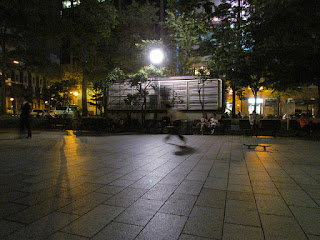 |
| Eating sh*t is universal |
After watching the hipsters and skaters for a while, I was off again to find the restaurant recommended for the local specialty, “Genghis Khan,” a grilled lamb dish named for the beloved murderous maniac. I was able to get myself in the general area of where the restaurant should be, but I couldn't find the exact location. It was supposedly on the tenth floor of one of the nearby high-rise buildings, but the one that seemed to fit the bill only had nine floors.
I decided to give it one more walk around the block to see if I was missing things, when I came across the three most dangerous words I could have encountered: Nikka Whisky Bar. Nikka Whisky is one of the big names in Japanese whiskey, and they seemed to have an upscale bar and lounge here in Sapporo. I am a man of few weaknesses, but if you hit one, you hit it true.
 |
| Hello, beautiful |
I walked up to the second-floor establishment and was shown to the bar at a twenty-something bartender's station. She politely gave me the English menu and waited for me to sort myself out. I decided to start with a tasting menu of the 12, 18, and 21 year “pure malts,” which I supposed were somehow better than regular un-pure single malts.
As I was drinking, we got to talking, after she got over her initial Japanese embarrassment at having to speak English. I assured her she spoke English much better than I Japanese, and we talked about my trip, and why it was ironic that this was a Wednesday, and why kanji is awful, and why although she thought New York was awesome, people from there still came here on vacations.
The 21 year pure malt was really quite good, so I found out from her if they took credit cards, and the answer was a dangerous affirmative, and so it began. I had another full dram of the 21 year, and then had a different 15 before I realized I hadn't had dinner. Mustering the last of my prudence, I started to settle up the bill, and I asked her if she knew where the restaurant I originally sought was located. She said she didn't, but added there was one downstairs in the building that served a very good Genghis Khan. And the matter was settled.
Allowing gravity to lead me along, I went downstairs and sidled into a booth at the place and ordered some Mongol warlord. Outside of a large party in the back room, I was the only one up front, so the host was paying pretty good attention to me. He asked if I wanted anything to drink while I waited, and that particular portion of good sense, or even the short-term memory to remember that I was coming to eat because I was already drinking on an empty stomach, had been previously drowned. Suntory it was.
Someone needs to do a serious scientific study on the affect of alcohol on inter-language communications, because (obviously up to a certain point) I can't help but think it helps. With his limited English, and my limited Japanese, the host and I managed to get information back and forth to each other effectively, and it only seemed to be more efficient as any semblance of sobriety quietly got his hat and sternly left the building. We started talking about my vacation, and baseball in general, and all manner of things, in great spirits. When he went in the back to deal with the party, he told the grill chef what I was doing, and then we started talking about baseball as well, he being a big Fighters and and all. As with last year, a little bit of “kompai” goes a long way towards bridging the language gap.
Seriously: double-blind study, government funding – I can't believe that some enterprising grad student hasn't latched onto this like a pit bull on a tasty baby.
Anyway, at some point I managed to get the check and try to head back to the hotel. Then, I made a discovery that was unique to myself that evening and had clearly never been discovered up until that point in history. If you are what one might charitably call less than sober, you can keep yourself moving in a relatively straight line by using the earthquake guide strips in the center of the Japanese sidewalks. I found this surprising, because in a country of millions of people who presumably drink every now and then, you'd imagine one of them would have discovered this before that night. But nope. It is one of those mysteries of science.
After a little sojourn on a bench watching the canal pass by the road for an indeterminate amount of time, I made it back to the hotel, and I woke up the next morning with a yukata over my street clothes, so I seemed to at least have had the right idea at some point.
The Accommodations:
 |
| Hotel Montery |
As soon as I checked in, I made use of the one hotel facility nearly immediately. With all the insanely hot weather lately, I filled a hotel laundry bag with pants and shirts to rehabilitate into general use. When I brought them down to the front desk, they helpfully assisted me in filling out the necessary forms, and then, to my great chagrin, they took out my sweaty, smelly clothes one by one and put them on their nice wooden desk to confirm all the items they received. To their credit, they did not break character once, even after pulling out the pants I had worn the previous day in Yokohama.
On Pre-Scotch
 |
| Sapporo Dome, 2011 |
Thursday, June 30, 2011
Chiba Lotte Marines vs. Hokkaido Nippon Ham FightersSapporo Dome
Pacific League, Nippon Professional Baseball
16:00Sapporo, Japan
Outside of the Game:
For some reason, I was particularly hungry upon waking the next day. I got presentable and went downstairs to avail myself of the extremely well-appointed breakfast buffet in one of the many event rooms in the hotel.
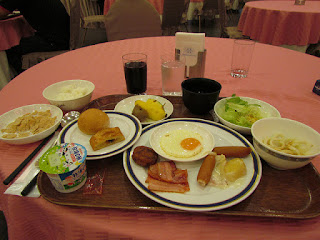 |
| Light breakfast |
Put bluntly, I destroyed the thing. I just kept eating and eating and eating, and if there was ever someone who got his money out of a fixed-priced buffet, especially one as fancy as this, it was I. I think one of the busboys actually was watching me after a while, whether out of curiosity, awe, or revulsion, we will never know.
After I had finally eaten my fill, I went out to kill the day before the game. One can hardly go to Sapporo without a trip to the namesake brewery, and so I had a visit slated for the morning. The directions on the map seemed rather straightforward, and I set off confidently, with, as will be seen, nothing to back up said confidence.
A short time later, I found myself not where I thought I was and with no idea how I managed to get so far off track, or where, incidentally, I was. After tentatively striking out in several other directions to get my bearings, I finally triangulated my location, which was nowhere near where I needed to be. By keeping it to simple right-angle marches, I managed to get to a subway station that took me to a station closest to my goal.
Another short walk later, and I was at least in the neighborhood, but signage for one of the city’s biggest attractions was surprisingly scarce. After wandering around several parking lots, I caught sight of the famous Sapporo Brewery chimney, and just walked as unerringly as possible in that direction.
This took me past the indoor practice facilities for the Fighters that were near the brewery. There was little to be seen from the outside, although there was a crowd of fans waiting by one of the entrances, no doubt waiting a glimpse of the players inside who were likely practicing for the game I would be going to later that evening.
After far too long a trip, I finally arrived at the Sapporo Brewery. I made my way to the Sapporo Beer Museum on the campus and took a look around. The stylish museum is a top area about the history and brewing process, while the lower level centers on ad campaigns throughout the years. As part of your admission, you get a ticket for a discount drink at the Sapporo bar, conveniently located near the exit of the museum, right by the gift shop.
 |
| Beer is made by elves |
Now, I haven’t had a beer in at least five years, probably much more. I drink wine with meals and scotch when I want to drink. However, it seemed wrong not to have a drink given the current circumstances, having access to the freshest Sapporo beer in the world. I used my token to buy a beer ticket in the vending machine, and then brought the ticket to the bar, where a perky bartender gave me a perfect pour. Beer is not bad, I grant. It was an excellent brew and hit the spot, but I’m going to stick to scotch.
 |
| One a year |
After my drink, I went over to the beer garden to get some lunch. I ordered up some more Genghis Khan and utterly confused my waitress by not ordering a beer with my lunch. She was nice enough to me, even though I was an apostate. I devoured lunch, apparently not sated by breakfast, and headed back to the subway stop to go back downtown.
 |
| A light lunch |
With some more time in the afternoon, I went over the Hokkaido University Botanical Gardens. In addition to the extensive greenery, the gardens also housed several small museums devoted to the first curator of the gardens, the native indigenous people of Hokkaido, and a small natural history museum that was the oldest museum on the island. The natural history museum was a Victorian affair of wooden glass cases holding stuffed specimens of the fauna on the prefecture that I enjoyed a little too much.
 |
| Natives exhibit |
I spent a relaxing late afternoon wandering the grounds until it was time to head to the game. I swapped out kits and grabbed the subway to the stadium. After the game, it was late enough in the trip and late enough when the game ended that I just took a subway back to downtown, went back to the hotel, and crashed for the night.
The Stadium and Fans:
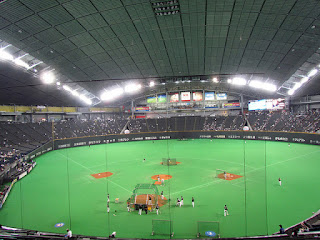 |
| Home plate to center field, Sapporo Dome |
This may have something to do with the incredible amount of fan-relations done by the Fighters. During the pre-game, there were several on-field activities, including letting children run the bases (greeted along the baselines by players and mascots) and playing catch on the field while the players warmed up. The fans got to stay on the field with the mascots and cheerleaders during the player introductions, and they were brought back on the field during certain between-inning events, one of which featured Ronald McDonald leading the fan, mascots, and cheerleaders in YMCA. I have evidence.
Given the remote location, a sizable contingent of Marines fans were in attendance and bouncing up a storm, especially during their ninth-inning comeback run.
The stadium itself is located at a high vantage point over the city, and outside one of the north entrance, there is even a patio seating area for visitors to look down on the city below (or at least if the weather was clearer than it was the day I went). This main entrance is enclosed under a glass ceiling, and several restaurants and stores are located in this atrium. Apparently, there is also the ability to go up into the observation deck in the top of the stadium, but it is not open before games on game days, or some such restriction.
In the back of the stadium is a practice soccer field, as the local soccer team also plays in the dome. There is a walkway all around the top level of the dome, but those are only exits once the game lets out. There is a lengthy tunnel that connects the north and south ends of the stadium, and there are player memorabilia and hands prints the length of the tunnel to keep you occupied during your walk. There is a large parking lot by the south entrances, providing another vantage point of the stadium.
The inside walkways are split on two levels and are incredibly spacious by Japanese standards. Concessions and merchandise stands line the lower and upper walkways, and visitors can walk the entire circuit of the stadium without interruption. Access to certain sections of the one-tier stands is regulated from the upper walkways and entry down into the main seating bowl is segregated from the outfield cheering areas.
You can walk right up next to the main scoreboard in right field, and there are two giant baseballs in left and right field. I had thought they may have been home run apple-type things, but there was a home run in the game, and they remained silent and unlit. There were also some special “Cinderella Seats,” but outside of some obvious guesses, I’m not sure what they were for.
In dead center field, there is a HotDog Park an extra level of stairs up. It has some specialty concessions, a glass smoking area giving a nice vantage to the field, and a large children’s play area looking down onto the ballpark.
At the Game with Oogie:
 |
| Ham scoring |
For this game, I was up on the first base side about halfway down the baseline, with some rather nice seats. I was sitting in front of a pair of ladies who chatted nearly constantly during the game, to the best of my understanding, about the game. They always excused themselves to me when they got up, which was nice of them, but unnecessary, as they weren’t interrupting me in any way.
 |
| Corporate synergy |
In wandering around the stadium pre-game looking for food, I ran across Ronald McDonald, or the Japanese version thereof. Disbelieving, I snapped a photo and was off, before I heard him say “besuboro,” at which I looked back and Ronald flipped me a thumbs-up. Sometimes I wonder if I imagine half of the things in my life. As I wolfed down a chicken box, I had plenty of time to contemplate the encounter, and it at least appears real. There’s a picture.
The Game:
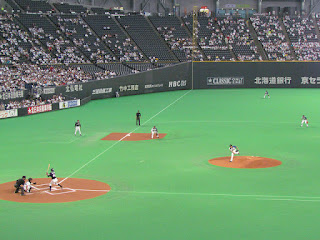 |
| First pitch, Marines vs. Fighters |
This is one that nearly got away from the home team. To start, both sides traded singles in the first, and the Marines got someone in scoring position in the top of the second before ground-out ended things. The Fighters struck back-to-back doubles to get one across in the second, and take a 1-0 lead.
The Marines came back in the top of the third with a single, stolen base and double that tied it up, but the runner on second was cut down at home trying to take the lead on a subsequent single, leaving it 1-1 at the break of the third. The Fighters answered back with a single, stolen base, and double of their own to take back the lead, and just for good measure, they doubled again, to make it 3-1 in their favor.
The fourth went quietly for both sides. A minor threat came and went for the Marines in the top of the fifth, but the Fighters led off the bottom of the inning by taking the first pitch out to right field. They tacked on another tally with a one-out walk and stolen base brought around by a two-out single, leaving the score at 5-1 after five innings. Both sides went quietly until the eighth. The Marines got a leadoff single, followed it up with a double, and brought the lead runner home on a fielder’s choice, leaving it 5-2 after the Fighters went in order.
With a three-run lead, the Fighters brought in their closer and got ready to celebrate their win. Except that they would need to wait a while. A leadoff single was followed by a deep double that brought the runner home, making it 5-3 with no outs. A pop-out to second restored some sanity, but it another quick single sent home another run and put the tying run on first with only one out.
The runner on first promptly stole second, and made it to third on an errant throw by the catcher. The closer then plunked the batter on the second pitch, making it first and third with one out. A walk on four pitches loaded them up, and the Marines fans in attendance were bouncing their ever-loving hearts out.
The closer got a gut-check visit, and then induced a weak pop-up back to the mound for the second out. After fighting for six pitches with the next batter, he forced a ground ball back to the mound, and finally closed it out 5-4, ceasing the bouncing of the visiting Marines fans.
The Scorecard:
Marines vs. Fighters, 06/30/11. Fighters win, 5-4.
I was on the Scoremaster again. Besides needing some fancy re-arranging necessary by the copious replacements and pinch hitters put in for the shortstop of the Marines, the only thing of note is that I finally got the umpire names for a Japanese game.
The scoreboards always show the umpire names in kanji only, and with no way of translating them, I can at best write down the kanji and hope I have the industriousness to try and work them out later. (Spoiler: I do not.)
It finally occurred to me this game that I had a shiny new camera with a shiny new optical zoom with which to pick up the numbers of the umpires sleeve, which would allow me to get their names out of my JapanBall book. And after several innings of trying to develop my mental powers to force umpires to turn to the left a little bit for sake of all things holy, I was able to track down my first umpire squad for a NPB game. And I think I may be the only person in the universe who cares.
The Accommodations:
I was at the Montery Sapporo again. My dry cleaning was waiting for me when I returned after the game, each item individually wrapped and pressed, and then placed in larger bags just to be sure. They were in much better shape than when they were delivered, and the wrappings actually helped with packing. At this stage in the trip, dirty clothes outnumbered clean by a healthy margin, so I was able to pack in the wrapped clean clothes with the knowledge they wouldn’t get skunked in the travel.
I spent a goodly bit of time repacking all my bags that night so make my main bag smaller so that I could use it as a carry-on on my flight the next day. I trusted the Japanese airlines, but not enough to put my only bag with them on a two-stage flight to the other end of the country.
2011 Japan II










